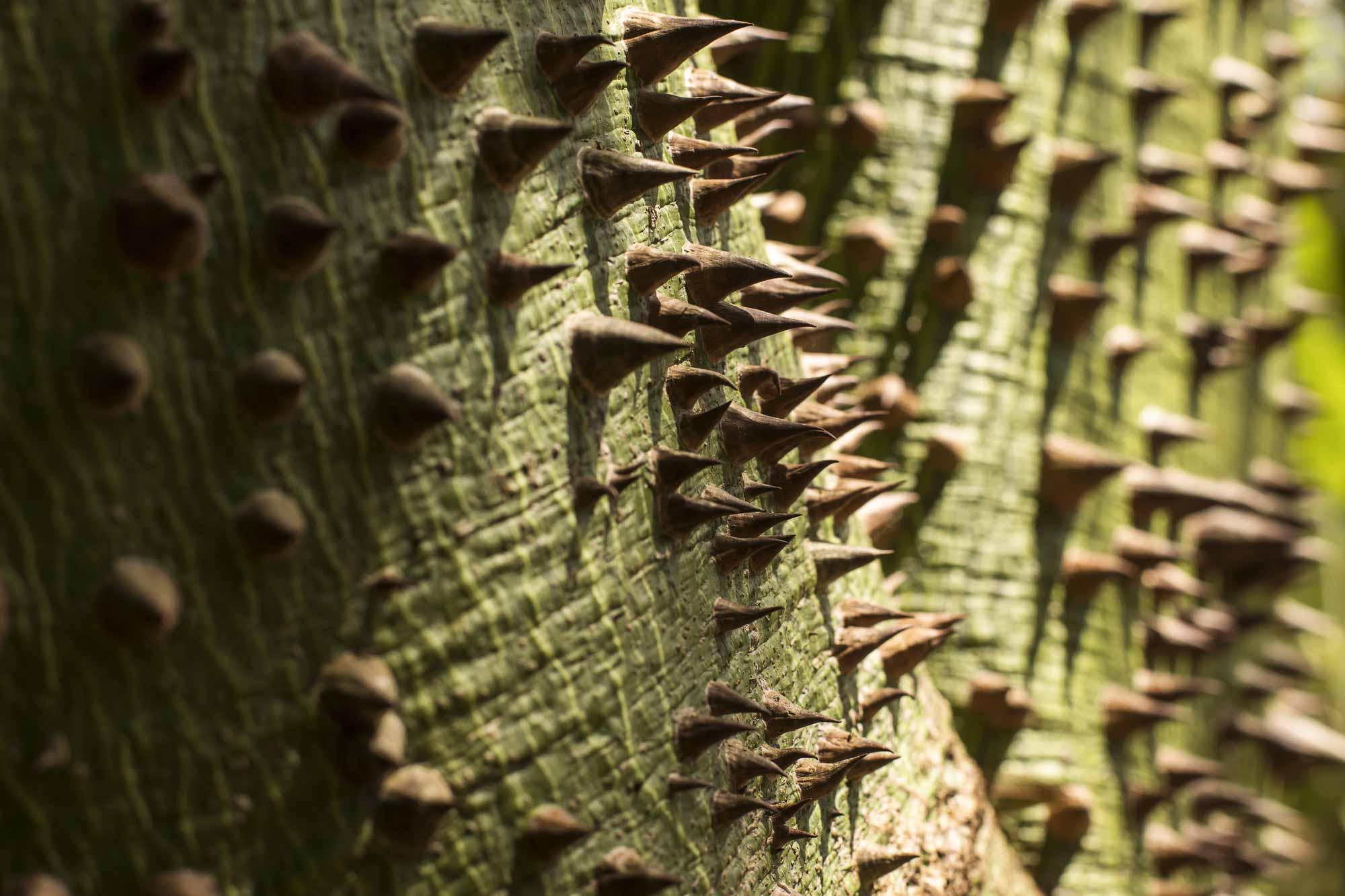The Hura crepitans, also referred to as the “dynamite tree,” is a plant that has a reputation for truly blowing people away in the fascinating field of botany, where nature’s wonders never cease.
Yes, it is what you read. The dynamite tree gets its name from the incredible ability of its fruit pods to detonate with a loud blast, sending seeds up to 330 feet (100 meters) into the air. We’re talking about a sound that can rival a little explosion, so this isn’t your typical pop.
Among the giants of tropical America, the dynamite tree, which is native to Central and South America, is 100 feet (30 meters) tall and has a girth of more than 3.3 feet (1 meter).
This remarkable tree has long, pointed spikes on its trunk that radiate toxic sap. The dynamite tree is adorned with tiny, grouped greenish-yellow blooms, which are followed by unusual fruits that resemble tiny pumpkins.
These unusual fruits, which are appropriately called “capsules,” have a maximum diameter of 6 inches. These capsules, which contain two to six seeds and are covered in woody, spiky protuberances, contribute to the dynamite tree’s mystique.
What truly sets these fruits apart is their explosive nature, possessing a force capable of causing harm to unsuspecting individuals or livestock. Countless stories recount the havoc wreaked by the dynamite tree—from drivers swerving off roads in panic to tourists scattering like characters in a cartoon.
The explosive mechanism of the dynamite tree’s fruits is nothing short of fascinating. The capsules harbor an internal structure comprising layers of tissue that separate during the drying process. As the capsules mature, these layers contract, creating tension that eventually reaches a breaking point, causing the capsules to burst open with a loud noise and propelling the seeds into the surroundings
Far from mere theatrics, the explosive display serves a crucial purpose in the dynamite tree’s survival strategy. The loud bangs generated by the bursting capsules aim to disperse the seeds over a wider area, increasing the chances of the species’ propagation.
As if explosive capabilities weren’t enough, the spiky protrusions on the capsules play a dual role, acting as a deterrent against animals attempting to consume them prematurely. In the intricate dance of nature, the dynamite tree seamlessly integrates offense and defense within a single pod.
Approach these capsules with caution. The next time you venture into the jungle, remain vigilant for the dynamite tree. If a sudden explosion echoes through the foliage, heed nature’s warning—duck and cover. After all, it’s best not to meddle with Mother Nature’s version of a hand grenade.